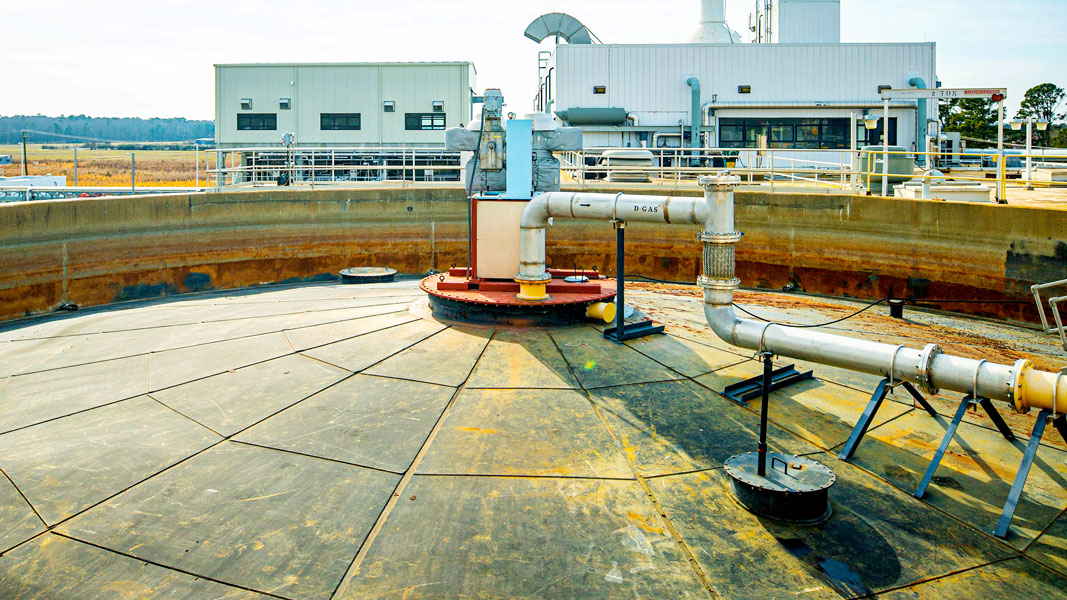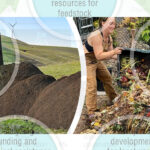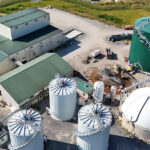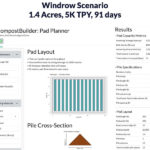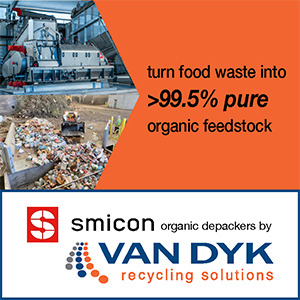Top: Anaerobic digester at the Atlantic Treatment Plant in Virginia Beach (VA). Photos courtesy Hampton Roads Sanitary District
Hampton Roads Sanitary District (HRSD) encompasses 20 cities and counties in eastern Virginia, serving 1.9 million people. HRSD’s eight major and six smaller wastewater treatment plants treat a combined 225 million gallons/day (MGD) of wastewater. The utility recently signed an agreement with Virginia Natural Gas (VNG) to install a renewable natural gas (RNG) facility at the Atlantic Treatment Plant (ATP) in Virginia Beach, one of HRSD’s largest, with a capacity of 50 MGD. Built in the 1980s, the ATP has utilized anaerobic digestion to treat wastewater solids from the beginning. In 2011, combined heat and power (CHP) engines were installed to recover energy from the digester gas. A decade later, the Cambi thermal hydrolysis process (THP) was added to preheat and jumpstart the breakdown of wastewater solids before entering the conventional digesters. At the same time, ATP started accepting food waste for codigestion.
Food waste is currently accepted at three of HRSD’s treatment plants — mostly grease trap waste from local restaurants, which is required by local ordinance to be separately collected and treated. At ATP, grease trap waste is screened as it comes out of collection trucks and then combined with wastewater solids and heated in the first tank of the Cambi THP, known as the “pulper.” To meet federal standards for Class A biosolids, all the solids treated at ATP must go through the same time and temperature regime, which takes place in the heated, pressurized Cambi THP reactors. The final thermal hydrolysis phase is the flash tank, in which organic matter further degrades when the pressure suddenly drops. Steam released in the flash tank is used to heat solids in the pulper and reactors. After exiting the flash tank, solids are cooled to appropriate temperature before being pumped into the digester. Chris Wilson, HRSD’s Director of Process Engineering, notes that ATP might house the only Cambi THP in the U.S. that processes fats, oils and grease along with wastewater solids.
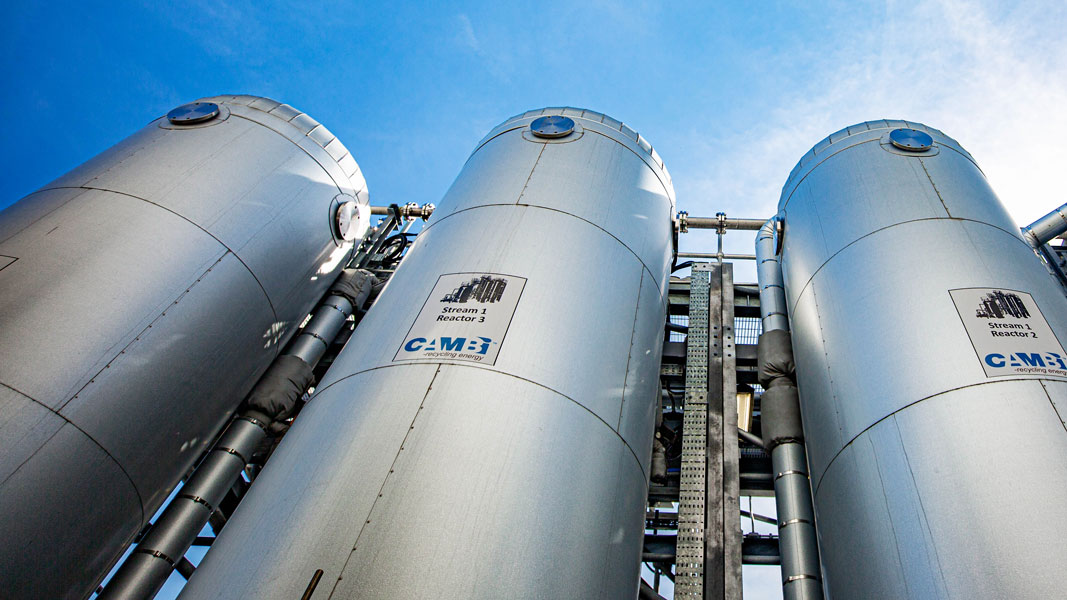
The Cambi thermal hydrolysis process (THP) was installed to preheat and jumpstart the breakdown of wastewater solids. Pressurized THP reactors above.
After spending 20 to 25 days in the digester, ATP biosolids are applied on agricultural land, including fields owned by HRSD that are used for agriculture and for research. Some solids are also composted. Future plans for ATP’s 370 acres (50 of which are taken up by the plant, 200 of which are active-use fields) include a biosolids education center, a research center, a biosolids blending and bagging area, forested wetlands, walking trails, and a community garden. Many of these projects have no set timeline, according to the April 2024 ATP Master Plan.
One addition that’s not in the plan is moving right along — the new RNG facility. ATP has been seeking an alternative to its CHP system for several years, since reaching a point where the engines didn’t generate enough power to make financial sense given local electricity rates and cost of maintenance. HRSD and VNG began talks less than a year ago about the possibility of upgrading ATP’s biogas to RNG. A May 2025 agreement solidified plans for VNG to lease land from HRSD at the ATP to build a RNG facility. HRSD will sell raw digester gas to VNG, and the utility will refine it into RNG. Additional lines will be run to a point in VNG’s pipeline network where RNG can be injected. Wilson notes that it’s hard for wastewater utilities to tie up funds in big projects like this one, so having VNG as a partner makes this all possible. Furthermore, the utilities have worked well together. “We found our people,” says Wilson.
HRSD’s bylaws allow for selling byproducts from the wastewater treatment process that have market value. In ATP’s case, that byproduct is cubic feet of biogas per minute. Other plants have sold brown grease and struvite. The hardest part is setting a sale price. For raw biogas, the price will vary based on the market value of natural gas, plus the Renewable Identification Number or RIN markets created by the federal Renewable Fuel Standard. RINs are used to buy and sell renewable fuel credits and prices are based on the type of feedstock. ATP carefully measures the amounts of wastewater solids and grease trap waste entering the Cambi pulper to determine the split between D5 RINs from food waste and higher-priced D3 RINs from wastewater solids (a cellulosic feedstock). HRSD tapped into learnings from other wastewater utilities during the planning phase, including a utility in Roanoke, Virginia. Byproduct sales can generate consistent revenue for wastewater utilities while recovering valuable resources. Wilson notes that the more utilities start selling byproducts, the more normalized it will become.


